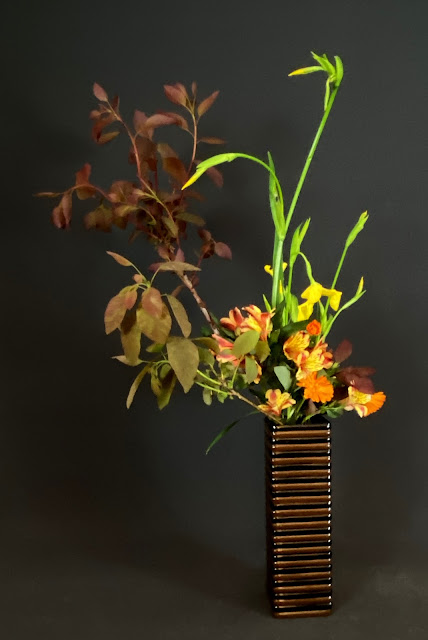Hello all,
My clematis was particularly prolific this year, despite the constant, relentless rain and I was able to cut enough flowers to make the arrangement, above. I've reached a point, after so many years of practice, where I make my arrangements instinctively, without thinking about a particular theme, unless it is for a class lesson. However, after completing a piece, I sometimes think about which theme it falls under. In this case, 'Using Only One Kind of Material', 'Wall Arrangement', 'To be Viewed from Below' and 'Colour of the Container'. Although, in the photograph, the mauve tones of the container are not visible.
The rain has done a great deal of damage to much of our spring flowering plants but it seems churlish to complain when people across the country are suffering floods and losses beyond measure. Our thoughts are with them.
The rain was, also, responsible for the sight, below. One could be forgiven for thinking it had snowed all over my compost bins. In fact, they are the flowers of my snow ball tree (Viburnum Opulus), whose branches hang over the bins.
The two themes that were selected were 'Basic Upright Nageire' and 'In a Suiban Without a Kenzan'. No matter our level of expertise, I believe it is necessary, periodically, to go back to basics.
My arrangement, below, is 'In a Suiban Without a Kenzan'. I used large branches of Portugal Laurel (prunus lusitanica) with flower spikes in bud. I photographed it when I brought it home and, with the luxury of more time, I refined it a little and added a third strelitzia.
Bye for now,















































